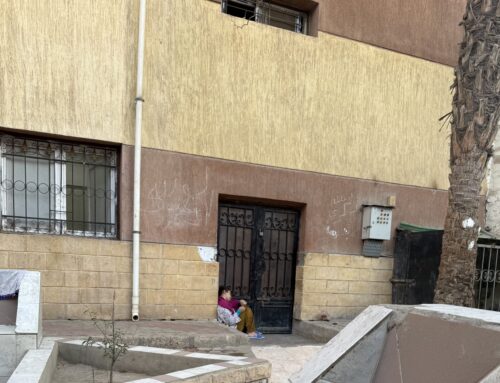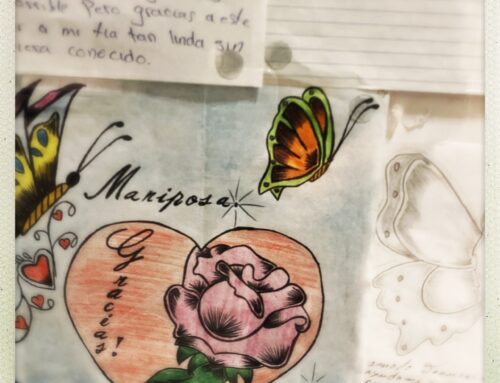Late last year, when I embarked on my journey into the field, I had a cache of theories, methods, and academic training at my disposal. However, all this prior learning and knowledge could not prepare me for what I felt upon hearing the first rifle shot echoing through mountains like a rocket launcher missile. Its boom was so loud that I was startled and my camera phone flew out of my hands. My training did not prepare me for the despair and heartbreak I felt upon seeing a mountain goat being shot and struggling for survival as his life slowly, most violently, stumbled on the rocks.
Life
After two cancelled flights and amidst a full-blown political crisis unfolding across the country, I started my fieldwork in Northern Pakistan. Tucked between the high mountains of the Hindukush, Karakoram, and Himalayan ranges, Gilgit-Baltistan is a landlocked borderland between Pakistan, India, China, and Afghanistan. It is a disputed territory between two nuclear rivals in South Asia and a zone of geopolitical interest for China. The people of Gilgit-Baltistan have been struggling for their political and constitutional rights for the past five decades.
This region is also a biodiversity hotspot, home to some of the most iconic and endangered animals including the snow leopard and the markhor, the national animal of Pakistan. Wild ungulates, including markhor, Himalayan ibex, blue sheep, and Marco Polo sheep, have long been hunted for survival and sport in this region. My research seeks to understand how wild goat hunting evolved from subsistence and colonial sports hunting to the contemporary era of trophy hunting. I trace the journey of wild ungulates from living beings to commercially harvestable and exportable commodities, as they are made the medium through which the state floats its affective development narratives to control nature and society in Northern Pakistan.
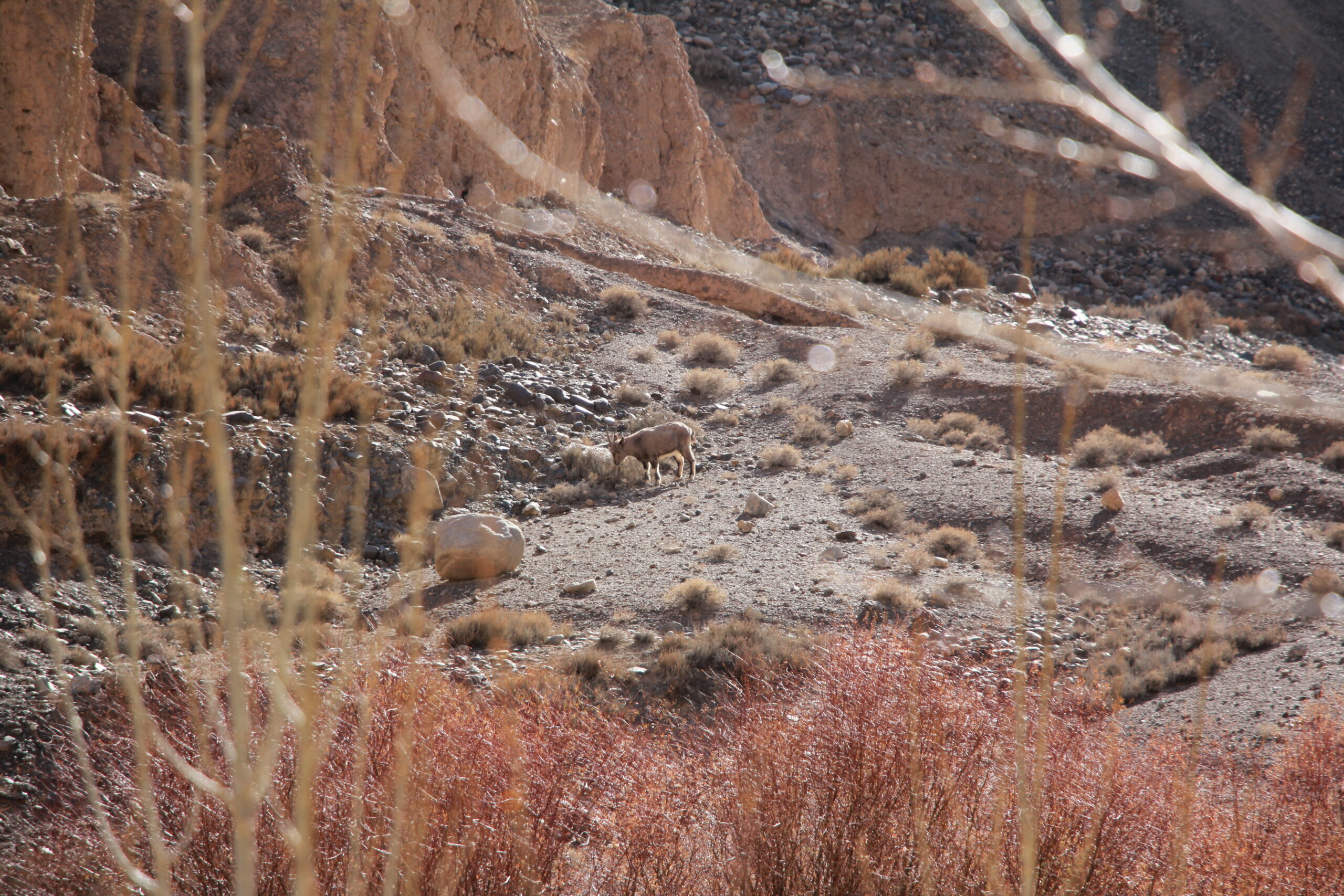
A lonely female ibex near the hunting cabin in Khunjerab. Photo by Hassan Virk.
Wild goats have been in a dichotomous state of existence in the region. Colonial administrators saved mountain goats from natural predators to be hunted down later for game; similarly, conservationists today seek to save mountain goats to be hunted both by the snow leopards and Euro-American or Pakistani elite hunters. Each year, trophy hunting permits are auctioned off to foreign and local hunters. In Northern Pakistan, as in Coetzee’s Africa, “there have been goats here since the beginning of time. They don’t have to be told what steel is for, and fire. They know how death comes to a goat. They are born prepared” (Coetzee 2000, 84).
To closely observe this intricate tapestry of life and death of mountain goats, I travelled for fourteen hours through one of the most dangerous routes in the world, marked by natural hazards and road accidents, reaching Gilgit at 4am on a midwinter morning. Oscillating between the feelings of fatigue and gratitude for my safety, I slipped into a reverie.
Waking up with my head spinning and neck stiff, I felt lonely in the rented room. There was no electricity; power cuts of around twenty hours daily were a routine matter. A small LPG gas cylinder sat beside the bedside table. The room was cold but I couldn’t find any matches to ignite the heater. I pulled back the curtains to the view of a tall, vertical glacier peeking at the residents of Jutiyal, Gilgit’s downtown, from behind the broad bodies of Karakoram mountains. It was all quite overwhelming.
I began to reach out to my acquaintances in the city. Shehzoor was the first person to visit me. I told him about my research. He told me about his Abu (father-in-law) who might be of help in finding local hunters. Zulfiqar Ali, a former hunter and now a police Head Constable, was my first interlocutor and my introduction to different forms of hunting in the region. Together we went to find participants, stories, and markhors on his Honda motorbike.
Through stories, poetry, folklore and my ongoing lived experiences, I slowly got attached to markhors and their habitat. In the company of hunters, herders and pastoralists, I felt at home. There was little else a young, aspiring anthropologist could wish for. However, immersion works in mysterious ways. Without realizing it, I had become deeply absorbed in ‘markhor country.’ How else do you explain whispering thoughts and fieldnotes to mountains?
Still life
It was in a taxidermist’s workshop that I realized the psychosomatic toll all this talk of killing animals could have on me. Breathing in the dust of bones, hides and chemicals, I felt a cloud of dizziness take over me. Accessed through a claustrophobic alley in Gilgit bazaar, Firdous Ali’s workshop is a place between life and death, where a new static life is given to mountain goats hunted by trophy collectors. He is a creator of still life.
Tiny remains of animal lives, or their afterlives, floated in the air, mixed with sunlight to create a translucent haze. Through this haze I saw wild goats, yak heads, piles of bones and horns, migratory birds—all frozen in time and space. A kitten that looked like a miniature tiger frolicked around small pieces of firewood. While watching its movements, I receded in a corner and blacked out. The kind voice of the taxidermist brought me back. “Do you need any chai or water?” he offered. Thankfully and politely declining, I asked about the kitten. “It would be impossible to run the workshop without her. She chases away the mice who come to nibble at the carcasses,” he explained. I found this bit of multispecies labor fascinating.
Death
The next day at the Wildlife Department, I got my hands on the list of one hundred Himalayan ibex permits sold for the season. My eagerness to observe trophy hunting took me to the mountain villages of Sost, a trade outpost on the Pakistan-China border. On the way, my research assistant, a street-smart guy and former taekwondo champion in his early twenties, warned me about the harsh cold there:
Sir, the temperature in our village drops to -25°C. I couldn’t find any Chinese coal for heating. We need to make do with the Pakistani coal. It gives a lot of acrid smoke and is being sold at double the price, but there’s no other option. There is no electricity. Water is frozen in the pipes. I don’t want you to catch pneumonia.
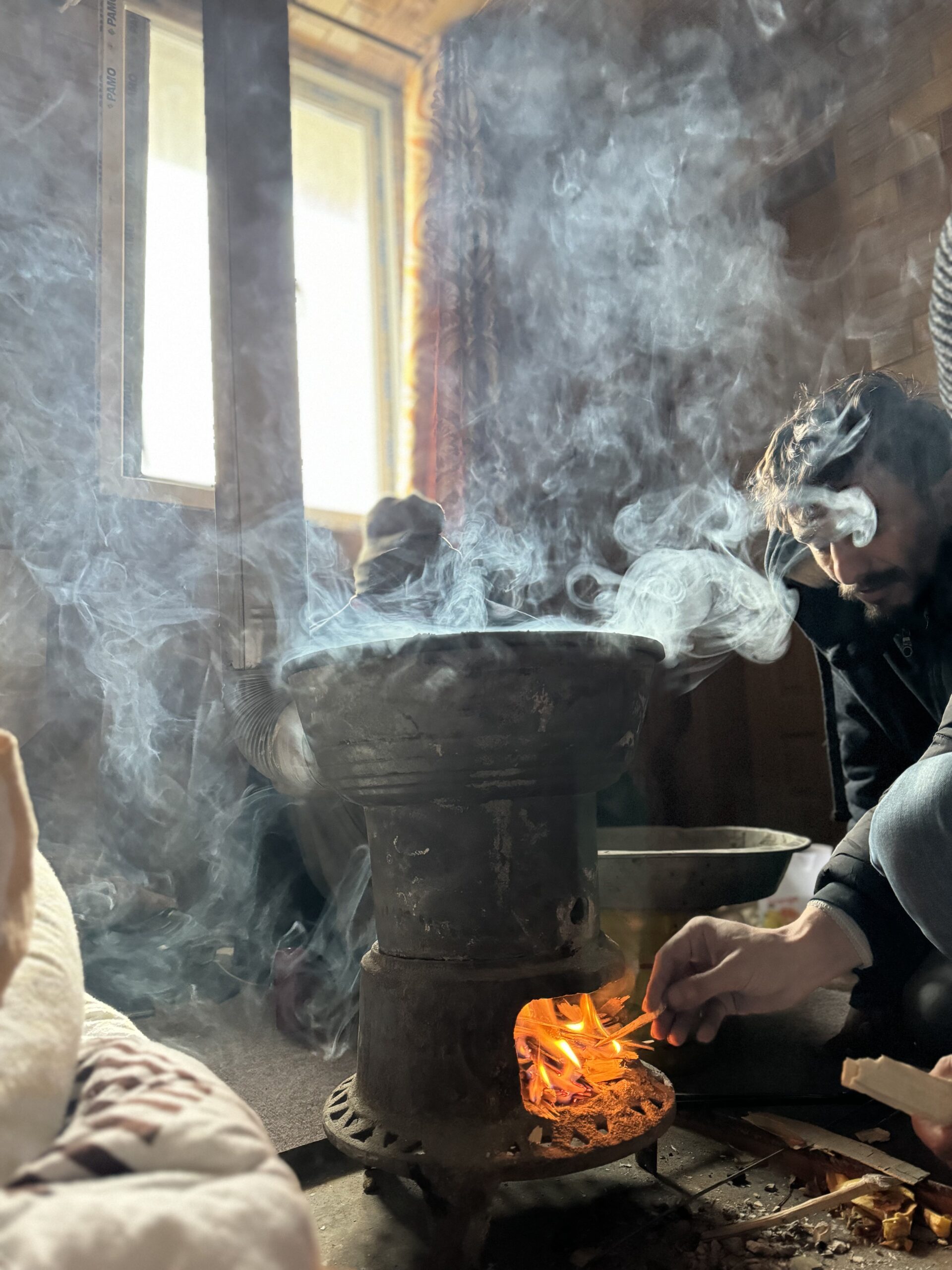
Bukhari. Photo by Hassan Virk.
It was -15°C when we arrived. My assistant’s family hosted me in their guest house and served hot tea with flatbread and apricot oil to help us warm up.
For two days, we waited at the guest house, continuously burning coal in the bukhari, the local furnace-like fireplace made of heavy metal with a curved exhaust pipe going through the wall. Inhaling carbon and plastic fumes, breathing became an effort. I would lie down, close my eyes and try to sleep off the frustration and nausea.
Around noon the next day, we got word that the first hunt of the season was about to happen in Khunjerab, 87 kms from the China-Pakistan border. By the time we arranged for an SUV and reached the location, the target was set and the rifle mounted on the hunter’s jeep.
Picture a long-range high caliber rifle used to shoot an animal from a close distance. As I saw the bullet bursting open the goat’s torso, my heart broke into a thousand pieces. For those few moments, as I stood there, I no longer remained an objective observer wrapped in an anthropologist’s garb. I was bare, exposed and vulnerable.
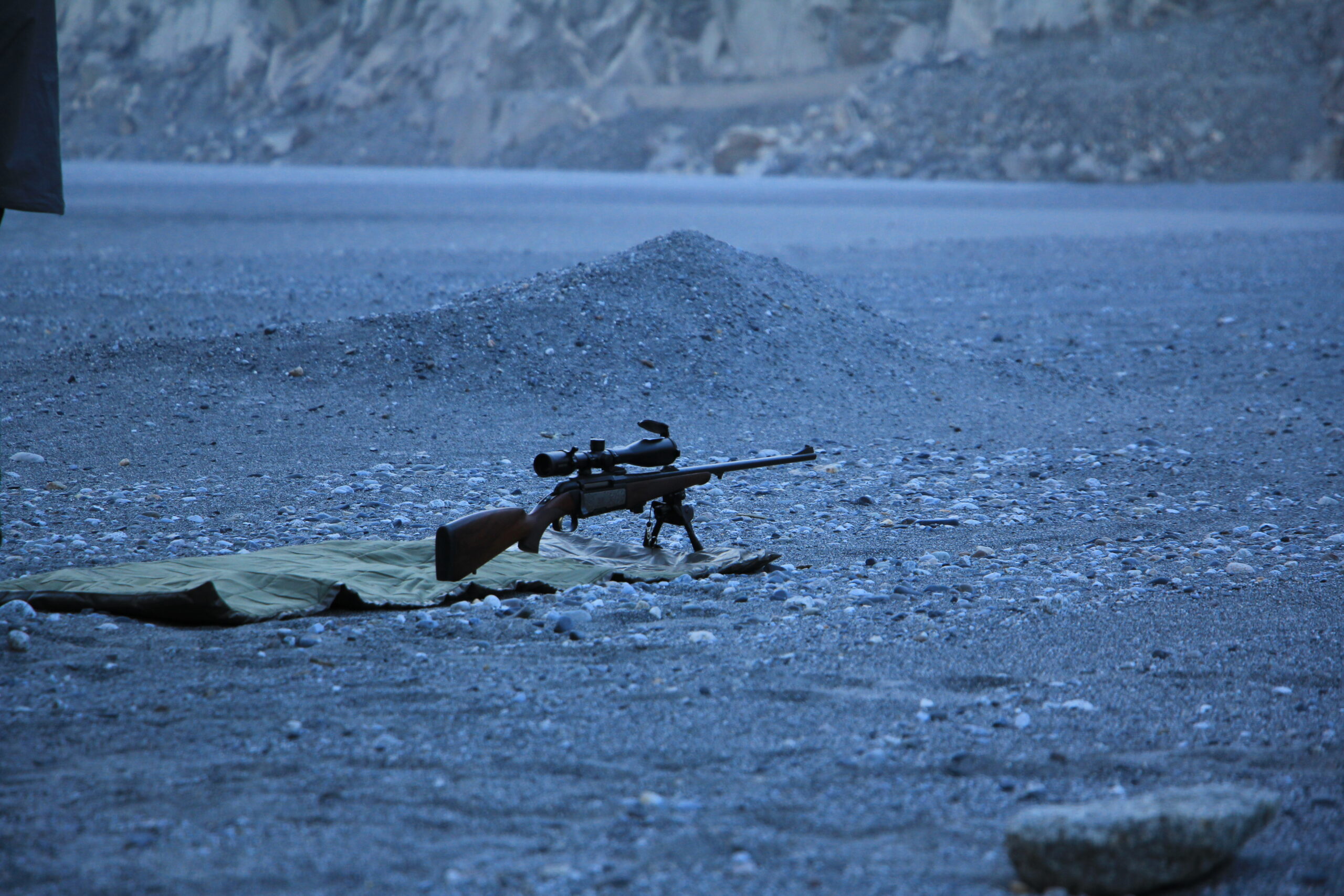
Hunting rifle in Gulmit. Photo by Hassan Virk.
In less than thirty minutes, the trophy was recovered, thrown into the back of the jeep and driven down to the slaughter hut. Deciding not to follow them, I took a few steps towards River Khunjerab. On the farther bank of the river, I saw a female ibex grazing and looking in my direction. How long has she been standing there? Has she watched her fellow animal killed? If so, will she mourn his death? I wondered. As the hunting and mating seasons coincide, against each male hunted a tragic more-than-human love story can be written.
I walked down to the hut, anticipating a familiar scene. Growing up Muslim, I had seen many a spectacle of slaughter. For me, like other kids, Eid al-Adha (Feast of Sacrifice) used to be very exciting. Goats and sheep were adorned and flaunted; tethered to electricity poles, trees, and gate hinges; fed, loved, and slaughtered in the streets. To save the children from trauma, parents did not allow them to see the animals put to the knife. Ironically, they were allowed to see the skinning and dismembering that followed.
At the back of the hut, the goat was scattered all over the place. Its skinned body hung upside down with a hook, its innards piled on a wooden serving tray, bright red chunks of its meat placed on a large hessian sack, its head and hide lying on a picnic mat. In the realm of multispecies justice, this would make for a crime scene.
Two men rubbed generous amounts of salt on the inside of the hide to preserve it. After throwing in around three kilograms of salt, they started folding the hide. The hide, with hoofs and the trophy head attached, was wrapped up in such a way that it took the shape of a fetus. The ibex appeared to be sleeping in his mother’s womb. I felt a sudden urge to hold it in my arms but didn’t.
I stood there, looking at that folded life and thought: It takes a male ibex eleven years to reach his prime. Taking life form in the womb of his mother, coming to the natural world at the close of gestation period, being nursed, learning to climb the mountains and moving with the herd in search of food and water. He grows up, becomes an adult, participates in the rut, claims his females and mates with them to further the cycle of life. And yet, all it takes is just one bullet to end his life’s journey.
My thoughts were interrupted when the local hunting guide brought a plate of roasted liver and exclaimed in joy, “Himalayan ibex ka gosht!” The men gathered at the hut chewed on the burgundy pieces of meat, as if taking communion. I refused to participate. My refusal to eat was met with displeasure and disappointment as if, in their eyes, I was not Muslim enough, not man enough. A few apologies and I was on my way back, carrying within me a whirlwind of emotions—mostly hurt and disgust at how killing was being so casually enjoyed.
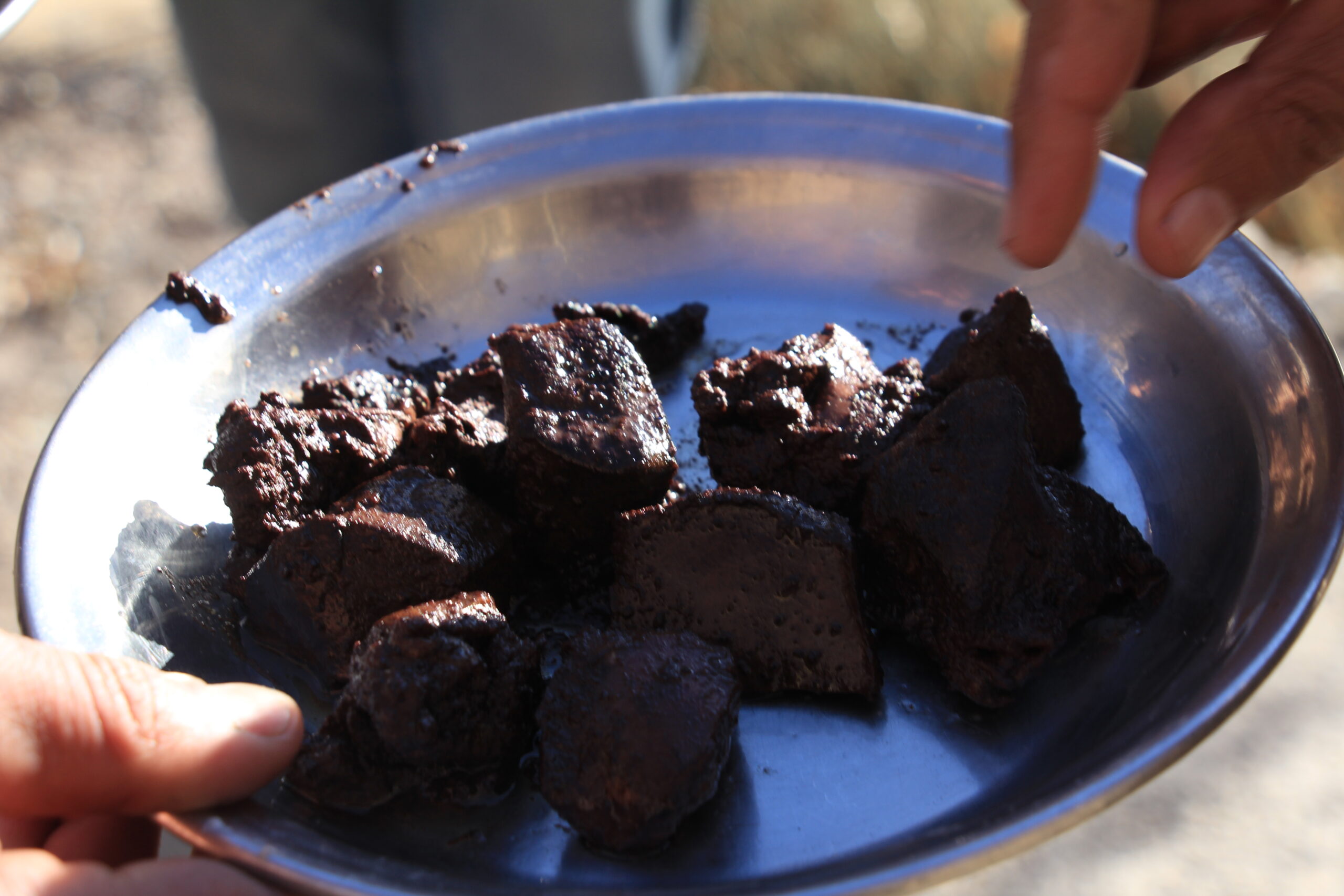
Liver of Ibex. Photo by Hassan Virk.
I was supposed to forget the entire episode. I didn’t. I hardly slept the next two nights. When I did sleep, I woke to terrifying visions of blood of that ibex falling on the rocks, flowing into the river.
Witnessing life, still life and death in its myriad forms, despite the trauma it triggered, forces me to write against the injustice happening to the mountain goats and their lifeworld. Through my research, I hope to generate a counternarrative, rooted in multispecies justice, against the state-led development narratives of trophy hunting in Northern Pakistan.
Afterall, in the realms of the living and the dead, there will always be a female ibex standing on the opposite bank of the river, waiting for an answer. We owe it to her.
References
Coetzee, J.M. 2000. Disgrace. Penguin Books.
Hassan F. Virk is a PhD candidate in Anthropology at the Australian National University, currently conducting fieldwork in the high mountains of Northern Pakistan. His research focuses on multispecies anthropology and multisensory ethnography, exploring how political and ecological violence implicate the entangled lives of human communities and more-than-human lifeworld at the edges of a military state and a religiously charged society.
Cite as: Virk, Hassan F. 2025. “Life, Still Life, and Death in Northern Pakistan.” In “Anthropology that Breaks Your Heart: Loss and Found,” edited by Salwa Tareen, Magdalena Zegarra Chiappori, and Hosanna Fukuzawa, American Ethnologist website, 24 November. [https://americanethnologist.org/online-content/life-still-life-and-death-in-northern-pakistan-by-hassan-f-virk/]
The American Ethnological Society Digital Content Editor is Kathryn E. Goldfarb (kathryn.goldfarb@colorado.edu).

